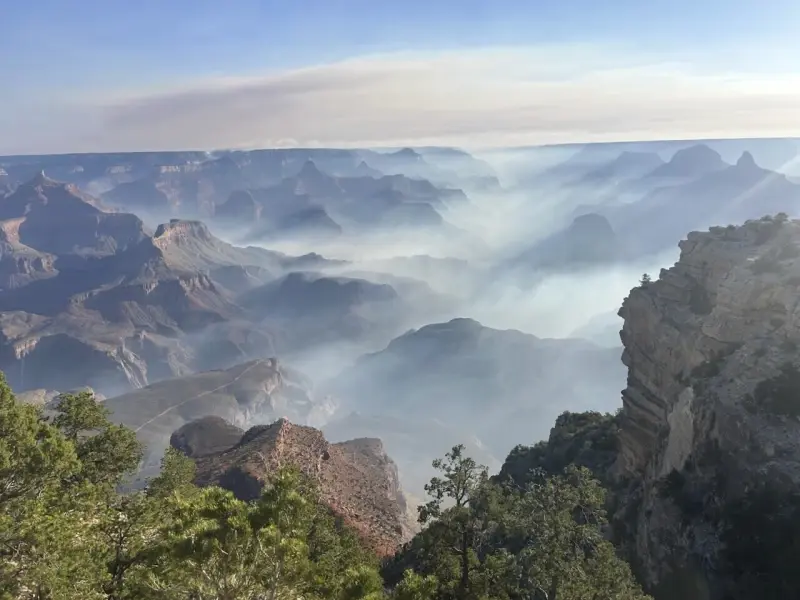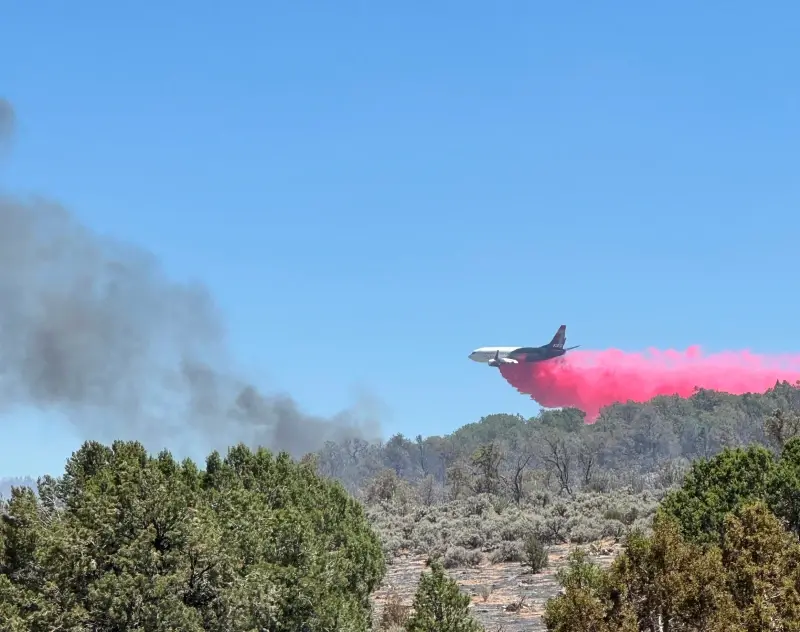A devastating blaze known as the Dragon Bravo Fire, triggered by lightning on July 4, has engulfed the Grand Canyon Lodge and dozens of other structures at the North Rim of Grand Canyon National Park. Park officials confirmed that between 50 and 80 buildings have been lost, prompting the closure of the North Rim for the entire 2025 season.
The Grand Canyon Lodge Destroyed By Fire
The Dragon Bravo Fire erupted near the North Rim on July 4 and spread rapidly to over 5,000 acres, fueled by high temperatures, low humidity, and winds reaching 40 mph. Initially managed as a controlled burn, the fire quickly intensified, overwhelming containment efforts.
A second fire, the White Sage Fire, consumed an additional 40,000 acres north of the park, exacerbating concerns about broader fire activity in the region.

The destroyed structures include the iconic Grand Canyon Lodge, visitor center, gas station, wastewater treatment plant, administrative buildings, employee housing, and archival cabins.
Evacuations were put in place on July 13 for around 500 park residents, staff, and visitors. No injuries have been reported, and all occupants were successfully evacuated.
When the fire hit the wastewater treatment plant, it caused a chlorine gas leak, forcing emergency responders and hikers out of low-lying areas. Chlorine gas poses respiratory hazards, especially in canyon basins, prompting authorities to order rafting parties to avoid Phantom Ranch.

Built in 1937 and designed by architect Gilbert Stanley Underwood, the Grand Canyon Lodge was a National Historic Landmark known for its rustic stone-and-log architecture, slope-roofed Sun Room, and panoramic canyon views.
The lodge’s destruction marks a profound cultural tragedy. Historic cabins, including those with communal Stone porches and the famed “Brighty the Burro” bronze statue, were also lost.
National Park Service officials declared the North Rim closed for the remainder of 2025, citing dangerous conditions and significant infrastructure loss.
Air and water-based firefighting efforts were hampered by chlorine gas and volatile fire behavior, with crews transitioning to suppression strategies to protect remaining structures.
Official Response
Arizona Governor Katie Hobbs has demanded an independent investigation into how the fire was managed, given concerns that it was initially treated as a controlled burn during peak fire season.
Park Superintendent Ed Keable expressed deep tribulation, highlighting the loss of the iconic lodge and the broader heritage.
Aramark, the park concessionaire, stated that all personnel and guests were safely evacuated and reiterated their commitment to protecting the landmark.
Arizona is in the midst of an intense fire season: in 2025 alone, 291 fires burned over 5,800 acres by early April, despite forecasted rains . Lightning-caused wildfires like the Ikes Fire (2019) and Mangum Fire (2020) have previously impacted the Grand Canyon region, but the speed and destruction of the Dragon Bravo event are historically significant.
Rebuilding Efforts
Discussions have begun among the National Park Service, Aramark, and preservation groups to explore rebuilding or reconstructing the lodge while preserving its historic design.
Fire managers are also establishing buffer zones to prevent future devastating fire impacts and reviewing response protocols .
The destruction of the historic Grand Canyon Lodge and numerous North Rim structures by the Dragon Bravo Fire represents an immeasurable loss to heritage, tourism, and the park’s seasonal community. With the North Rim closed for the season and pressure mounting for an independent review, the blaze underscores the urgent need for improved historic preservation and wildfire resilience strategies.


